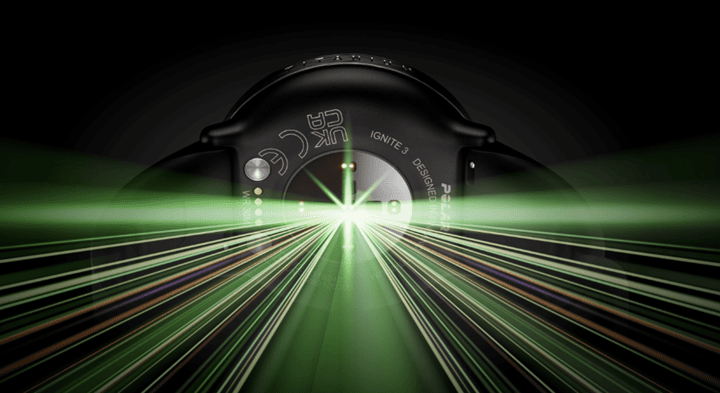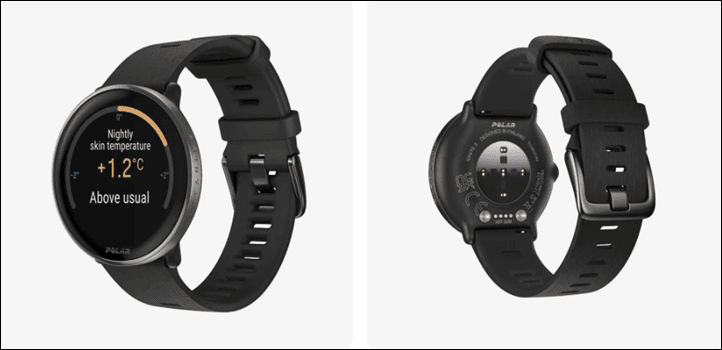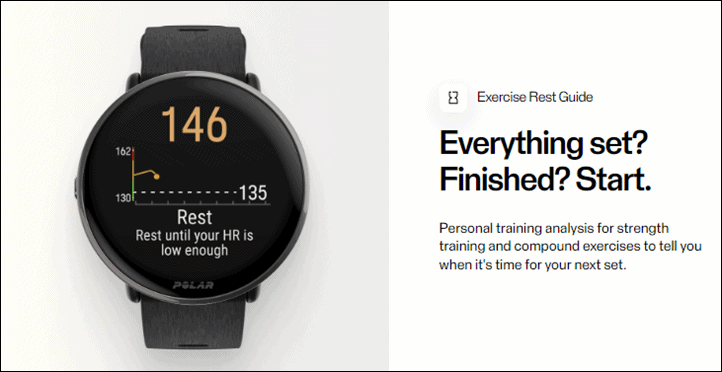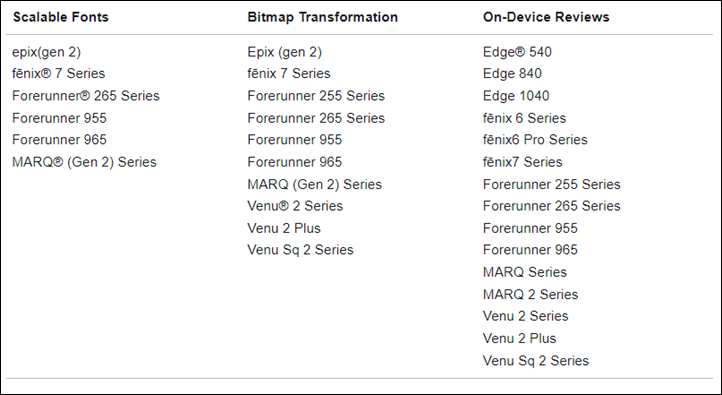Over the last week there’s been a few notable updates that are worth mentioning, even if briefly. Thus, this will be the post for it. It’s like the ‘Tidbits’ posts I usually do, except being all watches. Less random, and perhaps, a bit less exciting. But hey, such is life after the exciting spring swing of new watch launches. Mid-June till mid-August tends to be the quiet season for new watches, with the next big wave likely starting again in late August for more mainstream-consumer type watches, as is annually how it works.
In any case, here’s what’s notable.
Polar Adds Skin Temperature Sensing:
Last week Polar announced a new watch, the Polar Ignite 3 Titanium. Except, it wasn’t really new. It was just a new bezel material option for the existing Polar Ignite 3 from last fall. I don’t tend to cover case/material, or (if you want to sound fancy) color changes, unless there’s some other notable bits along side. In this case, there actually is notable bits: The newly added nightly skin temperature sensing.
We’ve seen a few other wearables add this in recent years, albeit at different levels. Starting waaaay-back there was Basis and their watches, then Fitbit over the last few years, and more recently we’ve had Whoop, Oura, and Apple all add it. In general, most show relative changes (e.g. +1.5f from your baseline), rather than exact numbers (e.g. 99.2*f). That’s somewhat because skin-temperature sensing accuracy is messy here, and it allows companies to be a bit more nebulous with it. But also, because the thing that actually matters here tends to be relative changes. Most consumers don’t know what it means to have skin temperature 99.2* vs 97.2*F (or your non-Americana values).
So what use is skin temperature? Well, the biggest driver today is women’s health, specifically detecting upcoming menstrual cycles (or, detecting it after the fact). There’s a mix of how companies do this, with some like Oura being pretty darn good at detecting upcoming cycles, and then those like Apple that show changes in temperature – including within women’s health metric areas, but don’t predict what’s coming cycle-wise. And then finally, those like what Polar is doing here, which is tracking the temperature shifts and just leave it at that. Often, companies do temperature sensing first, then women’s health prediction stuff later.
Finally, temperature shifts can also indicating the onset of illness. Of course, it can be that it was simply a hot summer night where your sweated all night in your bed, or inversely, I find on overnight flights with usually colder plane temps, you’ll see a drop in skin temperatures).
In any case, as for Polar, the platform uses the sensor on the back of the watch to measure your skin temperature while sleeping. It’ll show this data in two places. The first is on the watch each day, for last night’s sleep:
And the second is within the Polar Flow app, where you can see trending data over time. Undoubtedly Polar is looking at leveraging this data for more specific forward-looking recommendations/advice, but at the moment it’s just giving historical data.
Beyond that, Polar also added a new “Work-Rest Guide Training Analysis”. That’s an alphabet soup of fitness terms, but essentially what it does is during internal or HIIT workouts it’ll dynamically tell you when to start your next interval – rather than a set time period. It uses your heart rate data to determine this.
In fact, Polar even has an entire white paper on how they developed this, which you can read here. I’ve always appreciated Polar documenting this information in more depth than just a marketing blurb.
Polar says the existing Polar Ignite 3 users get this as part of the 2.0 software update. There’s no other plans to announce for other products getting the update at this time.
Pixel Watch & Fitbit Updates:
Google has continued to ever-so-slowly add new features to the Pixel Watch they released last fall, and the most recent update focuses heavily on heart rate, finally lighting up the SpO2 sensor that was seen at launch. Now, data is actually used from that. With the update, the unit will track your SpO2 levels during sleep, which can be seen both within the watch, as well as on the companion smartphone app. Additionally, they’ve now added high & low heart rate notifications (for 24×7 usage, not specific to sport zones):
And then beyond that they’ve added:
– Added Google assistant on Wear OS in five new languages: Italian, Portuguese, Swedish, Polish, and Spanish.
– Added three new Spotify tiles: Spotify DJ session, podcasts, and heavy rotation
– Added auto pause during workouts to running, walking, and cycling
And finally on the Pixel Watch front, they’ve launching a Metal Links band, which does have the ability to add/remove links as required.
Next, good news, existing Fitbit devices aren’t dead! Despite a long cold winter of Google (or Fitbit) killing off Fitbit features, spring sprung and it got a few new things:
– Exercise Modes will now automatically sort the most recently used modes to the top, versus having to do it on the mobile phone app (Charge 5, Luxe, Inspire 3)
– Daily Readiness Score is now available on the watch for a quick glance (All Fitbit watches that support Daily Readiness on the platform)
– New Menstrual Health Tile to log periods, view cycle state and edit information (Sense 2 & Versa 4)
– Notification support added in more languages including Hindi, Arabic and Vietnamese, notably for right to left text (Sense 2, Versa 4, Charge 5, Luxe and Inspire 3.
– Added Changing watchface/clock styles directly from your wrist via long-hold (Sense 2 & Versa 4)
– Added four new watchface/clock styles, notably bringing the most popular Charge 5 clock face to the Luxe & Inspire 3)
Got all that? And again, it’s good to see that there’s actually still active development going forward on Fitbit devices.
Garmin Connect IQ Refresh:
Connect IQ is Garmin’s app development platform, where all the 3rd party apps run. Historically speaking, Garmin announces a new major version each fall, and then we see minor updates the rest of the year. Different devices qualify for different components within that. So a newer fancy AMOLED display device may unlock more new display features than a slightly older MIP-based display. And further, sometimes it’s simply more processing power or such that unlocks features. And lastly, sometimes it’s “just cause” that older devices don’t get new developer features.
First up, Garmin is changing the Connect IQ SDK numbering scheme, which will no longer be in sync with the Connect IQ API version, so the new numbering scheme will be below, which in theory matches the Connect IQ system level shown to users.
For example, you can see this below, which is what’s shown on the watches (and firmware update release notes), when there are new things added:
At first this seemed confusing to me, as I thought the API level was being shown to users, but in digging further, it looks like Garmin is noting the system level in release notes too:
Next, there’s a handful of things that again, mostly only developers will care about. You can read the full details here, but in short:
– Added scalable fonts and new syntaxes to use
– Added bitmap transformations
– Apps can now request user reviews – so you as a user/consumer can rate apps
– Adds support for RedShift in the Connect IQ simulator
The devices supporting this are as follows:
And thus, my work here is complete.
—
With all that covered, I’ve got plenty more from Eurobike still to come. I had planned this post to go out last weekend, but it kept getting delays while getting clarifications. As for Eurobike, I’m going to make it a goal to not buy another cargo bike, but frankly, I can’t make any promises.
Thanks for reading!









0 Commentaires